Welcome:GZTECH
Welcome:GZTECH
Facing the diverse demands of the glass processing market, GZTECH continuously innovates and upgrades, introducing the 120W peak GT-Pro+ laser, offering a one-stop solution for glass processing.
The 120W peak GT-Pro+ laser utilizes independently developed optical amplification and electronic control schemes. While significantly increasing peak power, it overcomes issues such as spectral broadening and Raman scattering, expanding the technical indicators and application range of nanosecond pulse lasers.
The upgraded GT-Pro+ laser, through unique optical design and selected components, achieves near-diffraction-limited beam quality output; the optical path is deeply optimized, significantly enhancing the laser's anti-reflection capability; with a peak power of up to 200kW, fiber nanosecond pulse lasers can now also process glass, greatly reducing the equipment cost and usage threshold for glass drilling applications that originally required green light or ultrafast lasers.
Up to 120W GT-Pro+ for Drilling Performance to Meet Different Customer Demands.
In this test, the F-120-GT-10-N2-Pro+ pulsed fiber laser with an average power of 120W, a peak of up to 270kW, maximum single-pulse energy of 1mJ, adjustable pulse width of 2~20ns, and a 10mm beam spot output was used. The 2D 14mm clear aperture mirror can be directly connected to the laser output, and when combined with an electric Z-axis, the test can be completed. Depending on the required bore size, different focal length field lenses can be selected for testing to achieve optimal results.
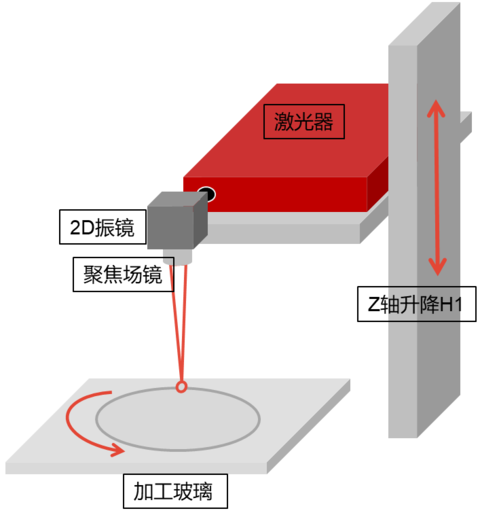
Schematic diagram of glass drilling equipment
Float glass is a type of flat glass produced by the float glass process, characterized by high flatness, uniform thickness, and good optical performance, widely used in construction, home, decoration, and other fields. There is a high demand for drilling holes in float glass, such as for glass doors, windows, lighting fixtures, switch panels, etc. Conventional methods make it difficult to complete larger or smaller or irregular holes, which can easily cause glass breakage, while using lasers makes it very simple.
We tested drilling holes of different sizes on float glass with thicknesses ranging from 1-19mm and found that the laser parameters for different bore sizes were basically the same, requiring only modification of the bore size. Through testing, it is suggested to use an F100 field lens for holes within 70mm, an F160 field lens for holes between 70-100mm, and an F210 field lens for holes between 100-150mm. The field lens used must be a high-power quartz field lens, otherwise, there will be significant thermal penetration.
The GT-Pro+ laser can not only drill circular holes on conventional glass but also waist-shaped holes, irregular holes, square holes, etc. However, because there is currently no power control function based on speed, it cannot achieve cutting at right angles or acute angles.
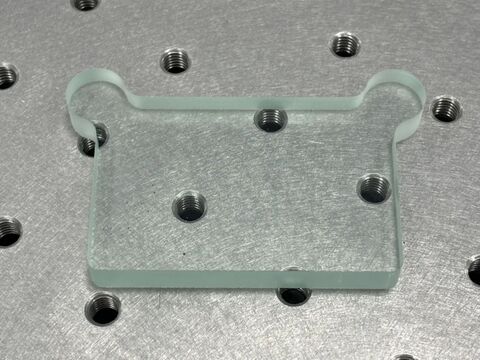
150mm large-hole
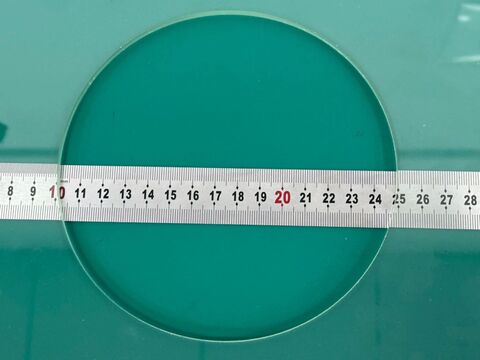
door hinge mounting holes
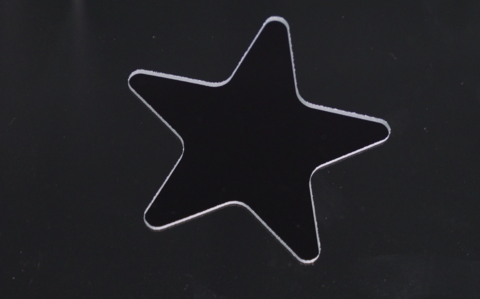
TU2 Regular glass with special-shaped holes
Photovoltaic glass is a low-iron content silicate glass, also known as ultra-clear embossed glass. The main raw materials are soda ash and quartz sand, with low iron content, high transmittance, and low reflectivity. As an important component of solar cell modules, the backplane photovoltaic glass requires holes to lead the current wires of the photovoltaic cell components out to the junction box.
One side of photovoltaic glass is smooth and transparent, while the other side has patterns that are difficult to see through. During testing, the patterned side was placed facing downwards and the plane side facing upwards, and the laser was incident from the plane side, transmitting through to start cutting layer by layer towards the patterned surface below. Through testing, using a frequency of 150kHz, power of 90%, speed of 4000mm/s, spiral line width of 0.6mm, and line spacing of 0.08mm, drilling a 12mm hole only takes 2.5 seconds, with smooth hole walls and a burr edge of <300μm.
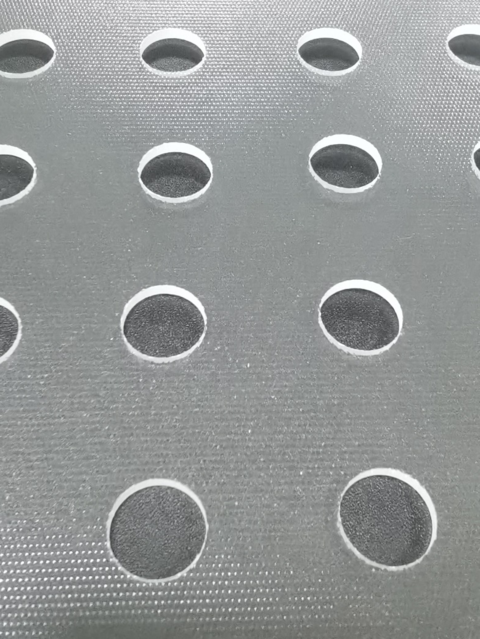
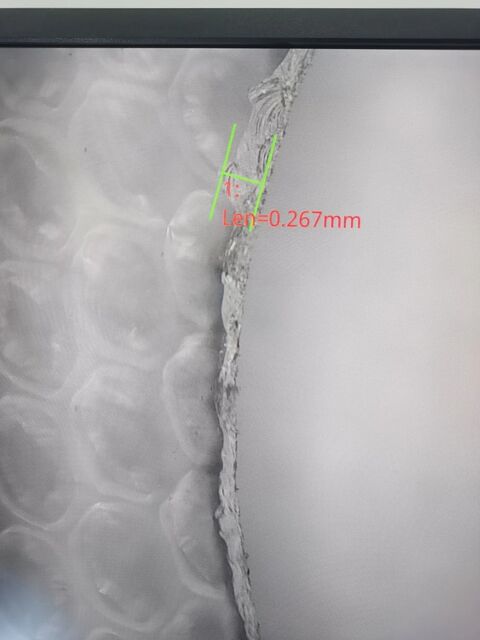
photovoltaic glass perforation
High borosilicate glass has a very low coefficient of thermal expansion, only about one-third of ordinary glass, good high-temperature resistance, and high physical strength. It can be used to make various items such as tableware, teacups, and utensils, but requires drilling holes for use. Laser drilling is an ideal choice for drilling high borosilicate glass due to its non-contact processing, no residual stress after drilling, fast efficiency, and high finished product rate.
In this test, drilling was carried out on the sidewalls and bottoms of high borosilicate glass cups of different colors, all of which were completed quickly with clean and dust-free hole walls and smaller burrs than conventional glass.

high borosilicate glass
The 120W peak GT-Pro+ laser with high peak power and good beam quality can be used for drilling various glass materials such as float glass, photovoltaic glass, and high borosilicate glass. It can process glass thicknesses up to 19mm, bore diameters from 0.3 to 150mm, with flexible graphic design, small bore taper, clean hole walls, low glass damage, high accuracy, and efficiency. In the fiercely competitive glass processing market, GZTECH will continue to upgrade its products to provide more choices for users.
By continuing to use the site you agree to our privacy policy Terms and Conditions.